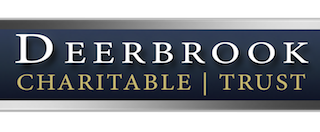August 21, 2015
Everything you wanted to know about transitional-kindergarten

Now, more than ever, children are expected to enter kindergarten with a foundation of basic learning skills. Children who start school prepared to meet this demand are more likely to succeed and gain confidence in school. The emergence of transitional-kindergarten (TK) highlights the importance of pre-K education and increasing educational expectations of younger students.
What is TK?
TK is the first year of a two-year kindergarten program that has been implemented in California. Since 2014, the number of kids enrolled in TK has risen to 134,000 children per year, serving one in four students entering kindergarten in California public school systems. While other states, such as Iowa, have introduced government-funded TK programs, California has emerged as an early leader in bringing the program to life.
TK was created for students whose birthdays fall between September 2 and December 2. These children are often too young to begin kindergarten at age four, but seem to miss a significant amount of instruction by waiting until the following year. In TK, students gain basic learning and comprehension skills, while ensuring maturity and classroom behaviors are on par with fellow students when they do enter kindergarten.
Is there a TK curriculum?
The TK curriculum focuses on very basic skills, but emphasizes both academic and emotional learning. It works to expand students’ vocabularies, as well as their basic cognitive functions.
Additionally, TK encourages discovery, curiosity, and imagination. These skills are highly valued in early childhood education, and lay the groundwork for future academic success. TK also incorporates social learning to ensure students are prepared for the classroom environment, particularly when it comes to collaborating with peers.
Is it like preschool?
Transitional kindergarten is different from preschool or other childhood development programs because it is taught by certified teachers, and it is part of the California public school system. This ensures that a student’s education is consistent, better preparing him or her for kindergarten in the same school system.
TK programs in California are funded by schools’ Average Daily Attendance (ADA) dollars. This ensures that resources are not being taken away from kindergarten programs, and that students are getting the best education possible.
How does TK benefit students?
Reading is a foundational skill that lays the groundwork for future learning, leading to long-term success in school and life. This process is most effective when started at an early age. TK allows students to begin reading and learning before they would in the traditional K-12 program. By approaching learning in this way, TK is designed to decrease the achievement gap that exists when four-year-old kids start kindergarten at such a young age. A foundation can be built in the TK year to ensure that students are prepared for success when they enter kindergarten.











